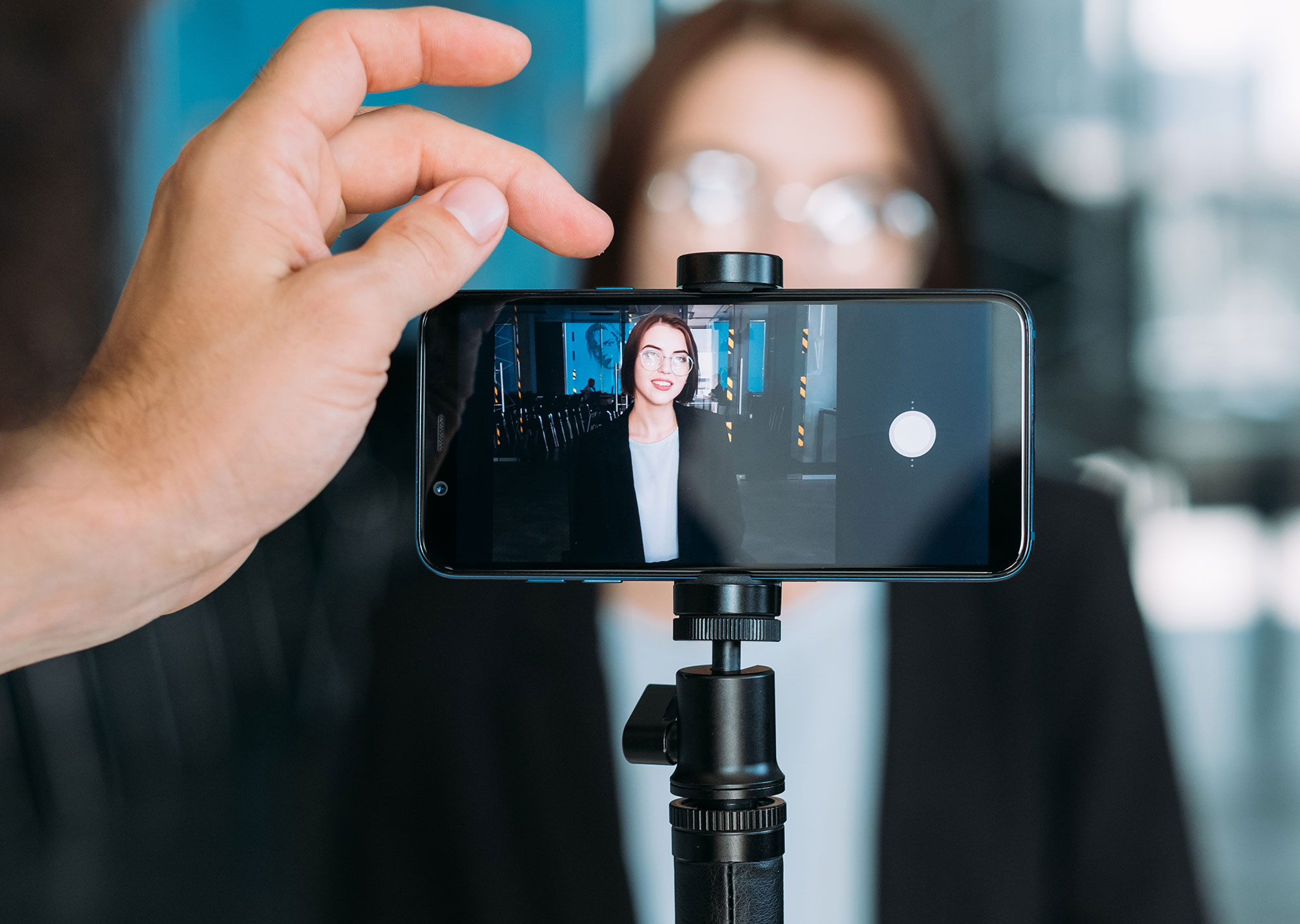Who’s ready for 2022? Who’s not sure how we’re already at 2022 and is still mentally stuck in March 2020?
Whatever you’re feeling, the unfortunate reality is we have just a couple weeks left in the year.
If you’re looking to grow your business over the next year, it’s time to sit down and create your 2022 Digital Marketing Plan.
Luckily for you, I’ve laid out exactly how to do that and I’ve got a special bonus for you at the end of this article.
Why You Need a Marketing Plan
You may be wondering why you need to go through this exercise to begin with. Well first off, winging it will only get you so far. But mostly, if you want to build up your business, you have to focus on your customers more. You have to work to build loyalty with your current customer base which then encourages them to become an advocate for your brand and send people your way.
But mostly, and I cannot stress this enough – you can only get so far without a plan.
Creating a digital marketing plan only takes a few hours of your time and yet it can save you HOURS and even DAYS throughout the year. You’ll be able to have everything set up for what you want to accomplish in 2022 and you’ll find quarterly, monthly, and weekly planning far easier.
Plus, you’ll stop asking yourself what you need to post on social every single day.
If you’re ready to save time and work smarter not harder, it’s time to dig in.
Creating Your Digital Marketing Plan
There are a few steps when it comes to creating your overall plan. Luckily for you, I’m going to walk you through exactly what you need to know to make this as simple as possible.
And no need to grab a notebook. I’ve created a handy workbook for you to print out and use to create your digital marketing strategy.
Know Your Objectives
Your first step might sound boring, but it’s imperative that you start here. You need to first know what your goals are.
Ask yourself – what’s the main goal you want your digital marketing efforts to achieve in 2022?
Once you’ve decided your main goal, then you need to break down how you might get there. Basically, you’re going to set long and short-term goals throughout the year that will help you achieve that main goal you’re trying to accomplish.
For instance, if your goal is to grow your online sales 15% by the end of 2022, then you’ll want to create sub-goals that might help with that. Those could be: growing an affiliate program; creating sales around important dates; make your website user experience easier; growing your email list by 25%.
Tracking Your Performance
You’ll want to decide on how you’re going to track success. Those can be called Key Performance Indicators (KPIs), but that’s just a fancy way of creating a goal with a number attached that you can track.
Use this formula to create those KPIs –
(Insert goal, e.g. ‘Increase traffic’) by (insert figure)% in (insert number of months)
Then, you’ll want to break those down into step by step of how you might get there.
The great thing is you can use a whiteboard, a calendar, the Panda Planner, Full Focus Planner, or the workbook I have below to think through that flow and what you’d need to do.
Analyze the Past Year
Defining your goals and laying out the path for how you’re going to do everything is the part that take the most time.
Don’t set all that in stone yet though. Now that you know where you want to go and roughly how you might get there, you want to take a look at the past year or so of your marketing.
Choose a timeframe to compare and ask yourself these two questions:
- What worked?
- What didn’t?
Simple, right? If you created any kind of plan last year, pull that out and take a look at your Google Analytics. Did you get the traffic you wanted?
For social media, go through your feed and simply analyze what’s getting engagement and what’s not. Is there a common pattern? The time you’re posting? The types of images you’re using?
Keep track of everything you feel worked and didn’t. And if you don’t know, or simply don’t think anything worked, then you get the freedom to do whatever your heart desires!
OK, not really….
Looking at Your Competition
One thing that can help you, especially if you don’t know if anything you did worked (or you simply don’t have a long history of posts to look at), is to analyze what your competitors are doing.
Go to their social media pages, their blog posts, their podcasts, try to search for them on Google. What’s working? What’s getting engagement and what seems to be falling flat?
If you can access to a competitor’s free Facebook Group or even get on their email lists, you can see exactly what they’re doing and what’s resonating, at least with you.
Define Your Buyer Persona
Now that the creative juices are flowing and you’ve got an idea for how you want to move forward to hit your goals and you know what did and didn’t work, it’s time to tweak that buyer persona.
A Buyer Persona, or a picture of your ideal customer, is a tool that you can use to create a simple profile of who you’re wanting to talk to.
In this case, knowing who your audience is will help you to figure out how to talk to them.
Three important things with your buyer personas are figuring out:
- What are their goals?
- What do they want to achieve?
- What problem are they trying to solve?
You need to know what your ideal customer wants and what problem they’re trying to solve when they come to you. Most of us are motivated by simple factors – increasing our revenue or saving time – but you want to drill down to the core answer. Then, you’ll look at your business and find where your products and services align with solving the problems your customers have.
One thing you’ll want to keep in mind is to talk the way your customer does. Avoid technical jargon and instead speak how they do. You might even create a simple thesaurus (a sample on the workbook you can download), so you know when to change up your technical jargon.
Questions to Determine Your Ideal Customer’s Habits
Once you know your ideal customer’s problems and what you’re doing to solve those, you need to think through a few other questions and take note of those answers.
- Where do they spend their time online?
- How do they like to learn?
- What drives them to make a purchase?
Decide on Your Digital Platforms and How
OK, you have my permission to go take a quick break and grab a Monster or a second cup of coffee. I’ll wait.
We’ve done a lot of work to start deciding on what we want to accomplish, how we’re going to hit those goals, what’s worked and not, and who we’re going to talk to.
Now we need to decide where and how we’re going to talk to the people we want to talk to so we can hit those goals.
Choosing Your Digital Platform
Go back to your buyer persona notes. Where do they spend time online? Choose a couple platforms that you know they’re hanging out on and decide which ones you can also spend time on.
Where you’re posting online needs to line up with where your audience is but also with what you can handle. Don’t pick TikTok if you don’t want to create a bunch of videos, for instance.
Some of the platforms you have to choose from are:
- Social media (Facebook, Instagram, Twitter, TikTok, LinkedIn)
- Digital and search ads
- Blogs
- YouTube
Decide Your Marketing Budget
You’ve got where you want to post and create content, now what money can you actually put behind that? Remember, your time also equals money so you need to factor that in.
You want to decide what you’re willing to spend (time and money) per click, per lead, and per actual sale. You also want to decide how much time and money you’re willing to spend each week on a platform. Then, you’ll want to allocate that budget to each channel and split it up.
Remember, these are just goals and don’t have to be 100% accurate. Especially if you’ve never done this before, it will take a lot of guesswork on your part. Just choose a number you’re comfortable with and track it each week and month to ensure you’re on track. You can always adjust your plan throughout the year.
Creating Digital Marketing Content
Now that you know where and how much, you get to decide what kind of content you’re going to create. The fun part!
First, review your different channels and decide what your main outlet might be. For me, that’s blogs. I create a main blog topic each week and then position my social media and other marketing content around those blog topics. It helps me to focus in my weekly, monthly, and quarterly plans without taking a ton of time.
The other great thing about choosing one main outlet? It lets you create multi-use content. That means you can take one piece of “anchor” content and break that up into multiple other items.
For instance, one blog post can become 2-3 social media posts, a video, a podcast episode, and an email. And you can always revisit that blog topic and reuse its content months later.
Make sure when you’re creating content, you’re also focusing on helping your ideal audience with their struggles and problems. You want to provide just enough of a win that they begin to trust you and want to work with you later.
And most importantly – your content should attract your ideal customer’s attention and fascinate or educate them. You have to hook them in to give your content the time of day.
Write It Down
Hopefully you’ve been taking notes throughout, but your last step is to write it all down!
There’s not really a wrong way to lay out your digital marketing plan as long as you understand it and will follow it.
Of course, to help with all of this, I’ve created this handy worksheet for you.
Some things to keep in mind when you’re writing down your digital marketing plan:
- Do set milestones with time frames attached
- Highlight your key campaign
- Document what is going on which channel and when
- Decide how you’ll measure success or failure
You’ll need to keep this handy, because you’ll want to check in throughout the year. And don’t be afraid to tweak and adjust your plan. The world can change on a dime and your ideal customer’s needs might not be what you expect.
Whatever your plans, there’s nothing wrong with adjusting those when you get more information.
Honestly? Real truth? If you’ve never really approached your marketing with a plan before, it can take a year for your organic strategies to really start having an effect. So don’t take it too hard when they don’t work immediately. That’s when you use ads to speed up that process.
Just make sure you’ve taken the time to write it all down.



